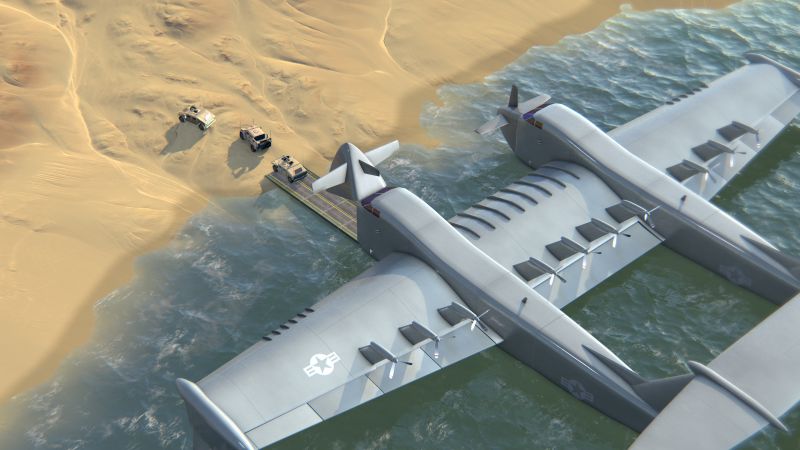The US Defence Advanced Research Projects Agency (DARPA) has selected two teams to develop the Liberty Lifter X-plane concept launched in May 2022. The Liberty Lifter programme aims to design, build, float, and fly an affordable, innovative, and disruptive seaplane that operates efficiently in ground effect (< 100 feet above surface), can sustain flight altitudes up to 10,000 feet mean sea level (MSL), and enables efficient theater-range transport of large payloads at speeds far exceeding existing sea lift platforms. Liberty Lifter will use low cost manufacturing akin to ship fabrication in building a highly innovative seaplane capable of meeting Department of Defense (DoD) heavy lift requirements (100+ tons) that operates with runway and port independence.
During Phase 1, DARPA will work with both performer teams and Department of Defense stakeholders to refine the Liberty Lifter designs with particular attention to operational needs and operating concepts. The Phase 1 contract awards are for an 18-month period of performance with six months of conceptual design work and nine months of design maturation culminating in a preliminary design review. There will be an additional three months for manufacturing planning and test/demonstration planning reviews.
As scheduled, Phase 1 will transition into Phase 2 in mid-2024 with continued detailed design, manufacturing, and demonstration of a full-scale Liberty Lifter X-Plane. DARPA anticipates teaming with one or more DoD Service and international partners for those activities and further development of the Liberty Lifter concept into an operational vehicle.
Two teams — General Atomics working with Maritime Applied Physics Corporation and Aurora Flight Sciences working with Gibbs & Cox and ReconCraft — will develop designs for DARPA’s Liberty Lifter Seaplane Wing-in-Ground Effect full-scale demonstrator. The Liberty Lifter program aims to demonstrate a leap-ahead in operational capability by designing, building, floating, and flying a long-range, low-cost X-Plane capable of seaborne strategic and tactical heavy lift.
The planned Liberty Lifter demonstrator will be a large flying boat similar in size and capacity to the C-17 Globemaster III transport aircraft. Goals include takeoff and land in Sea State 4, sustained on-water operation up to Sea State 5, and extended flight close to the water in ground effect with the capability to fly out of ground effect at altitudes up to 10,000 feet above sea level.
“We are excited to kick off this program and looking forward to working closely with both performer teams as they mature their point-of-departure design concepts through Phase 1,” said DARPA Liberty Lifter Programme Manager Christopher Kent. “The two teams have taken distinctly different design approaches that will enable us to explore a relatively large design space during Phase 1.”
The General Atomics team has selected a twin-hull, mid-wing design to optimize on-water stability and seakeeping. It employs distributed propulsion using twelve turboshaft engines.
Aurora Flight Sciences point-of-departure design more closely resembles a traditional flying boat, with a single hull, high wing and eight turboprops for primary propulsion.
For more information visit:




